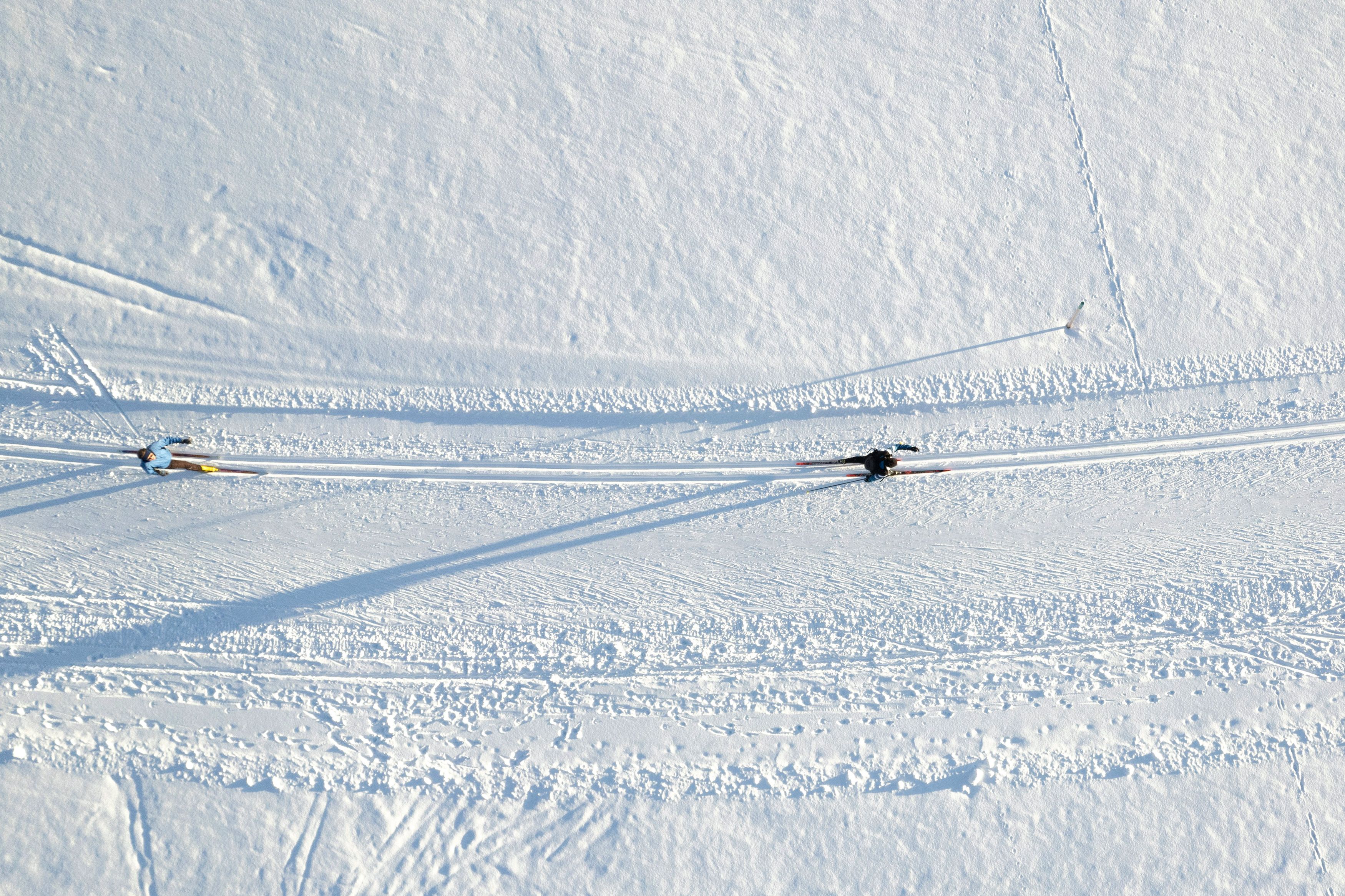PFAS in ski wax: Forever chemicals on the ski trail
Dübendorf, 18.11.2025 — When the forever chemicals known as PFAS enter the environment, they remain there for generations and can harm humans and nature. Despite increasing bans, many PFAS are still in circulation – including on Swiss ski slopes and cross-country trails, where the toxins enter the environment through abrasion from ski wax. Empa researchers have, in connection with a graduation project, detected elevated PFAS concentrations in snow samples from the Engadin region – and are urging cross-country skiers to switch to fluorine-free waxes.

PFAS – short for per- and polyfluoroalkyl substances – are currently the subject of numerous discussions and legislative proposals. Many of these so-called “forever chemicals” (see box) are harmful to human health and the environment. Since they can potentially remain in the environment for centuries and accumulate in humans and animals, it is important to restrict their use as much as possible. This is a challenge, as PFAS are widely used in numerous everyday objects and industrial processes.
Although industry is the largest emitter of PFAS, consumers also have a responsibility. This is because some of the applications where PFAS are currently used are not strictly necessary. One example that is particularly relevant for Switzerland is their use in certain ski waxes. The International Ski Federation (FIS) has already taken action: Since the 2023/2024 season, fluorinated ski waxes have been banned from all FIS races; their use leads to disqualification. This also applies to Swiss events, such as the Engadin Ski Marathon. Ski wax manufacturers have already responded by switching their product ranges to fluorine-free products.
However, Swiss ski slopes and cross-country trails are not yet completely PFAS-free. This was discovered by researchers from Empa's Analytical Center during a random sample taken at the Engadin Ski Marathon in March 2025. A few hours after the skiers had set off, they took snow samples from the various tracks directly after the starting line, as well as around two kilometers after the start and a blank sample far away from any cross-country ski trail.
A short distance to the lake
“We measured relatively high levels of the typical PFAS found in ski wax,” says Markus Zennegg, head of the Analytical Center. “These are primarily perfluorinated carboxylic acids with an even chain length of 6 to 14 carbon atoms.” The highest concentrations were found at the starting line, where the skiers started with freshly waxed skis. After two kilometers, significantly less PFAS remained in the snow, as the skis quickly lose their fluorinated wax coating through abrasion. Nevertheless, the concentrations were still measurably elevated even there. “This is a cause for concern directly above Lake Sils,” says Empa researcher Stefan Reimann from the Air Pollutants / Environmental Technology laboratory, who collected the snow samples. When the snow melts in spring, these forever chemicals enter the water and can accumulate in aquatic organisms and fish.
The fluorinated substances in ski wax are intended to improve the gliding properties of skis and thus help ambitious cross-country skiers go faster. However, the differences between these and modern fluorine-free waxes are minimal. “The skis of the ten fastest professional skiers in the Engadin Ski Marathon were all tested, and no PFAS were found,” says Reimann. “Obviously, you can be fast even without fluorine.”
Responsibility is called for
The researchers suspect that most of the PFAS did not end up in the snow due to malicious intent on the part of the athletes, but rather owing to a lack of awareness among recreational cross-country skiers. This is also supported by the fact that the elevated PFAS concentrations were not only measured in the tracks reserved for the marathon, but also in areas where normal cross-country ski trails run. “A block of wax can last for several years,” says Zennegg. “And almost all older ski waxes contain PFAS.” He recommends replacing old ski wax with fluorine-free alternatives, which are commercially available and labeled accordingly. “It simply makes no sense to release such stable substances into the environment for a few minutes' advantage in a race,” adds Reimann.
The researchers have now also taken soil samples from the same locations. These too show significant contamination with the persistent chemicals. “At such concentrations, there is already a risk that PFAS will accumulate in excess of the permissible limits in the meat of cattle grazing there,” warns Zennegg. Further PFAS studies are also in the works: Over the past few months, researchers at the Analytical Center have built up analytical capacities to determine around 30 of the most common PFAS in various material and environmental samples, for example from recycling processes.
PFAS, the forever chemicals
The PFAS class of substances comprises thousands of chemical compounds. They have two things in common: They contain fluorocarbon bonds, and they are extremely stable, meaning that they hardly decompose in the environment. The health effects of PFAS are not yet fully understood, but they are associated with a variety of diseases, from organ damage to cancer. In a new edition of Pocket Facts, Empa, Eawag, and the Ecotox Center provide information about these forever chemicals and how they can be avoided. The next “wissen2go” on the topic of PFAS will take place on November 25, 2025. Participation in the online event is free of charge (in German; register here).
Further information
Markus Zennegg
Analytical Center
Phone +41 58 765 46 15
markus.zennegg@empa.ch
Dr. Stefan Reimann
Air Pollution / Environmental Technology
Phone +41 58 765 46 38
stefan.reimann@empa.ch

